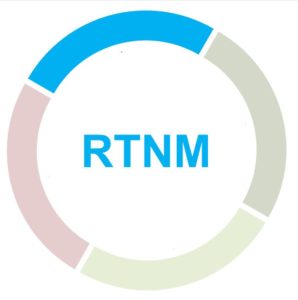
MRTs offer guidance to patients regarding necessary preparation, and provide additional resources to ensure patient comprehension and compliance prior to initiating procedures
Importance of patient preparation and instructions
- Health literacy is directly linked to knowledge, motivation and the ability to access, understand, appraise and apply health information in order for a patient to make judgements and informed decisions regarding their health.1
- Variations in patient health literacy can affect their access to and understanding of healthcare information (e.g., difficulty with reading, writing, numeracy, communication and use of electronic technology).1,2
- Standardized patient preparation instructions (verbal and written) are used to achieve quality diagnostic results, improve accuracy and consistency of results and maintain patient safety.1,3,4
- Patients are more likely to comply when they have an understanding of the reasons for the preparation instructions.5–7
- Failure by a patient to comply with the preparation instructions may cause a delay in the procedure or a decrease in diagnostic quality of the procedure.8
Delivering Instructions
- Instructions are given to the patient ahead of the procedure in their language of choice.1
- Instructions are worded in a manner that aligns with each individual’s health literacy, which may include clarifying standardized patient preparation instructions.9-11 All aspects of the procedure should be outlined, including2:
- Pre-study preparations that need to be followed
- The importance and reasons why pre-study preparations are necessary
- Elements of the procedure
- Required post-procedure instructions
- Expected turnaround time for results to be sent to the requesting physician
- MRTs answer patient questions related to preparation and the procedure at the time the instructions are given.3
- Patients are provided the opportunity to clarify and ask further questions
- If requested, patients are provided with information on obtaining copies of images and reports.
- Patients are provided with contact information in case questions arise
- Both written and verbal instructions must be culturally sensitive and should not include communication that may perpetuate healthcare access disparities.12
- In the event of non-compliance, the study may be delayed, rescheduled, cancelled, or substituted with another procedure based on the advice of a supervising radiologist, nuclear medicine physician, or ordering physician.
References
- Goguen J. Health literacy and patient preparation in radiology. J Med Imaging Radiat Sci. 2016;47(3):283-286. doi:10.1016/j.jmir.2016.06.002
- Hansberry DR, Shah K, Agarwal N, Kim SM, Intenzo CM. Nuclear Medicine and Resources for Patients: How Complex Are Online Patient Educational Materials? J Nucl Med Technol. 2018;46(2):144-146. doi:10.2967/jnmt.117.203380
- Society of Nuclear Medicine. SNM Procedure Guideline for General Imaging 6.0. Published online 2010. Accessed March 8, 2021. http://s3.amazonaws.com/rdcms-snmmi/files/production/public/docs/General_Imaging_Version_6.0.pdf
- Pandit M, Vinjamuri S. Communication of radiation risk in nuclear medicine: Are we saying the right thing? Indian J Nucl Med IJNM Off J Soc Nucl Med India. 2014;29(3):131-134.
- Makanjee CR, Bergh A-M, Hoffmann WA. Healthcare provider and patient perspectives on diagnostic imaging investigations. Afr J Prim Health Care Fam Med. 2015;7(1). doi:10.4102/phcfm.v7i1.801
- Fereidouni Z, Sabet Sarvestani R, Hariri G, Kuhpaye SA, Amirkhani M, Kalyani MN. Moving Into Action: The Master Key to Patient Education. J Nurs Res. 2019;27(1):1-8. doi:10.1097/jnr.0000000000000280
- Greaves C, Senior V, Barnett J, Clark M, Pope J, Hinton P. Information to Accompany Patients Undergoing Nuclear Medicine Procedures.; 2006. Accessed March 12, 2021. https://www.hse.gov.uk/research/rrpdf/rr416.pdf
- Mettler F, Guiberteau M. Essentials of Nuclear Medicine and Molecular Imaging. 7th ed. Elsevier; 2018. https://www.elsevier.com/books/essentials-of-nuclear-medicine-and-molecular-imaging/mettler/978-0-323-48319-3
- Agency for Healthcare Research and Quality. The Patient Education Materials Assessment Tool (PEMAT) and User’s Guide. Published 2013. Accessed March 11, 2021. http://www.ahrq.gov/health-literacy/patient-education/pemat.html
- Practice Development Inc. SAM Suitability Assessment of Materials for evaluation of health-related information for adults. Published online 2008. Accessed March 11, 2021. http://aspiruslibrary.org/literacy/SAM.pdf
- University of Oxford, The British Library. The DISCERN Instrument. Published 1197. Accessed March 11, 2021. http://www.discern.org.uk/discern_instrument.php
- DeLaO A, Hoque K. Systematic Review of Patient Educational Materials for Nuclear Medicine Examinations. J Nucl Med. 2018;59(supplement 1):1203-1203.
Related Posts
-
PATIENT MANAGEMENT Topic Guideline Patient Care Communication of critical or unexpected findings Core Patient monitoring…
-
PATIENT SAFETY TOPIC GUIDELINE General Safety Infection control Core Maintenance of CPR certification…
-
Radiation therapists provide ongoing patient assessment to ensure quality care
